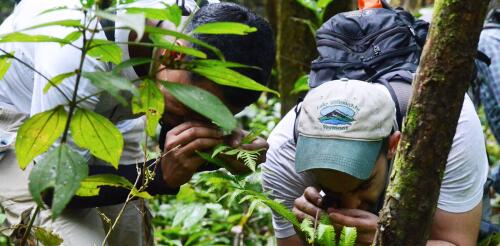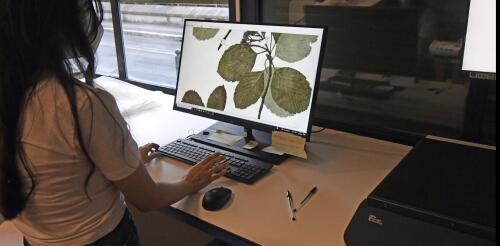Natural history collections
Museums often celebrate new acquisitions, especially something rare or historic. In April 2024, scientists from the Natural History Museum of Jamaica and The University of the West Indies, Mona Campus accepted a very rare and historic specimen: a 16-inch lizard called the Jamaican giant galliwasp (Celestus occiduus). It had previously been stored in the Hunterian museum at the University of Glasgow in Scotland. “‘Celeste’ is home!” announced one Jamaican news outlet, invoking the nickname scientists had given the reptile, which they believed was a female. A close-up of ‘Celeste,’ the Jamaican giant galliwasp specimen repatriated to Jamaica. Jane Barlow/PA Images via Getty Images Why would a preserved lizard, some 170 years old, evoke such excitement? Celeste was collected in the 1850s and represents a species that was endemic to Jamaica but is now classified as cri...
When you hear about the abundance of life on Earth, what do you picture? For many people, it’s animals – but awareness of plant diversity is growing rapidly. Our planet has nearly 300,000 species of flowering plants. Among animals, only beetles can compete with that number. There are more species of ferns than birds, more mints than mammals, and more beans than butterflies. Measured in total mass, plants make up 82% of all life on land across the globe. We are plant scientists and co-founders of Let’s Botanize, an educational nonprofit that uses plant life to teach about ecology, evolution and biodiversity. In the past several years we have witnessed a botanical boom, with participation in plant-based hobbies surging. From cultivating houseplants to foraging for wild foods and outdoor gardening, plant appreciation is on the rise. Botanizing is spending time alongside plants in order to observe and appreciate them as living organisms – like birding, but w...
Some of the world’s most popular museums are natural history collections: Think of dinosaur fossils, gemstones and preserved animals. Herbaria – collections of pressed, dried plant specimens – are a less-known but important type of natural history collection. There are some 400 million botanical specimens stored across over 3,500 herbaria around the world, but most are not widely publicized and rarely host public exhibits. I study biodiversity and global change, and these collections have fueled my work. My collaborators and I have used herbarium collections to study how flowering times respond to changes in climate, how dispersal traits and environmental preferences affect the likelihood that plants will become invasive, and how fires affect tropical biodiversity. I have had easy access to specimens from every corner of the world, but most researchers are not as lucky. This is partly because herbaria as we know them today are largely a European creation. And...


